3. Circular fashion¶
This was a super exiting week where I explore fractal possibilities in a module designed to produce Zero Waste. I have found that you can do 2D and 3D combinations to shape your ideas as you do with LEGO...
Assignment¶
- Design and prototype with paper and scissors modular configurations and locking connections. Document the paper prototypes √
- Run tests of laser cutting of your designs in fabric and document the parameters for the chosen fabric.√
- Design and Document the process.√
- Laser cut the modules. Create a modular or seamless garment, showing that the connection is well designed and holds the pull/stretch of a garment. Document the assembly process and tests.√
- Upload the open source file in pdf, in correct scale with 1-5 pictures at (https://oscircularfashion.com) (preferably in white background) √
- EXTRA POINT Submit some of the modules to the analog or digital material library of the lab. (20cm *20cm aprox)
How will it be evaluated?¶
- References and Concept development
- Design : sketches, prototypes, material choices, tests , 2D vectorial design softwares
- Fabrication : laser cutting, workflow, assemblying, material used and left overs
- Documentation : Anyone can go through the process and understand
- Final outcome
- Originality - Aesthetics : Has the design been thought through and elaborated
Files and Links¶
Workflow¶
- Research about Circular Fashion
- Document the paper and digital prototypes
- Laser cutting
- Upload open source
Research¶
I was super impressed about Euhnsuk Hur work. Always fractal attracted me, so I decided to base my design on her work to understand better fractal tessellations and then explore different options.

As you can see in her module, she has a) and b) versions. The first one has two “tongues” to connect with smaller modules and b) does has one “tongue” to connect with same size modules. Also you may see that the internal lines “cuts” are not present on all sides. In my criteria this not symmetrical modules can imitate tessellation expansion or possibilities of connections. For this reason I have decide to explore making modules that has male and female connection possibilities in all directions and adding Zero Waste cutting design.
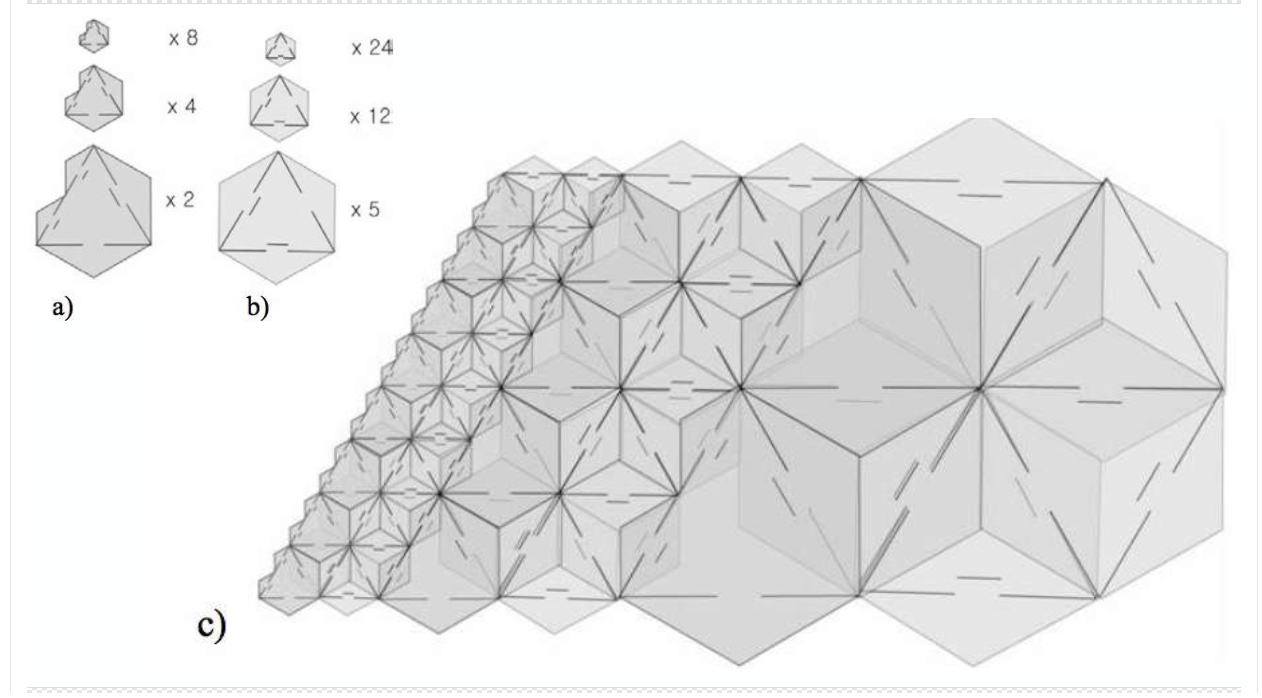
Document the paper and digital prototypes¶
It is super important starting to understand with pen and a sheet of paper to understand logics and le ideas flow. Then I started to use CAD software to continue the process with super precise geometry.
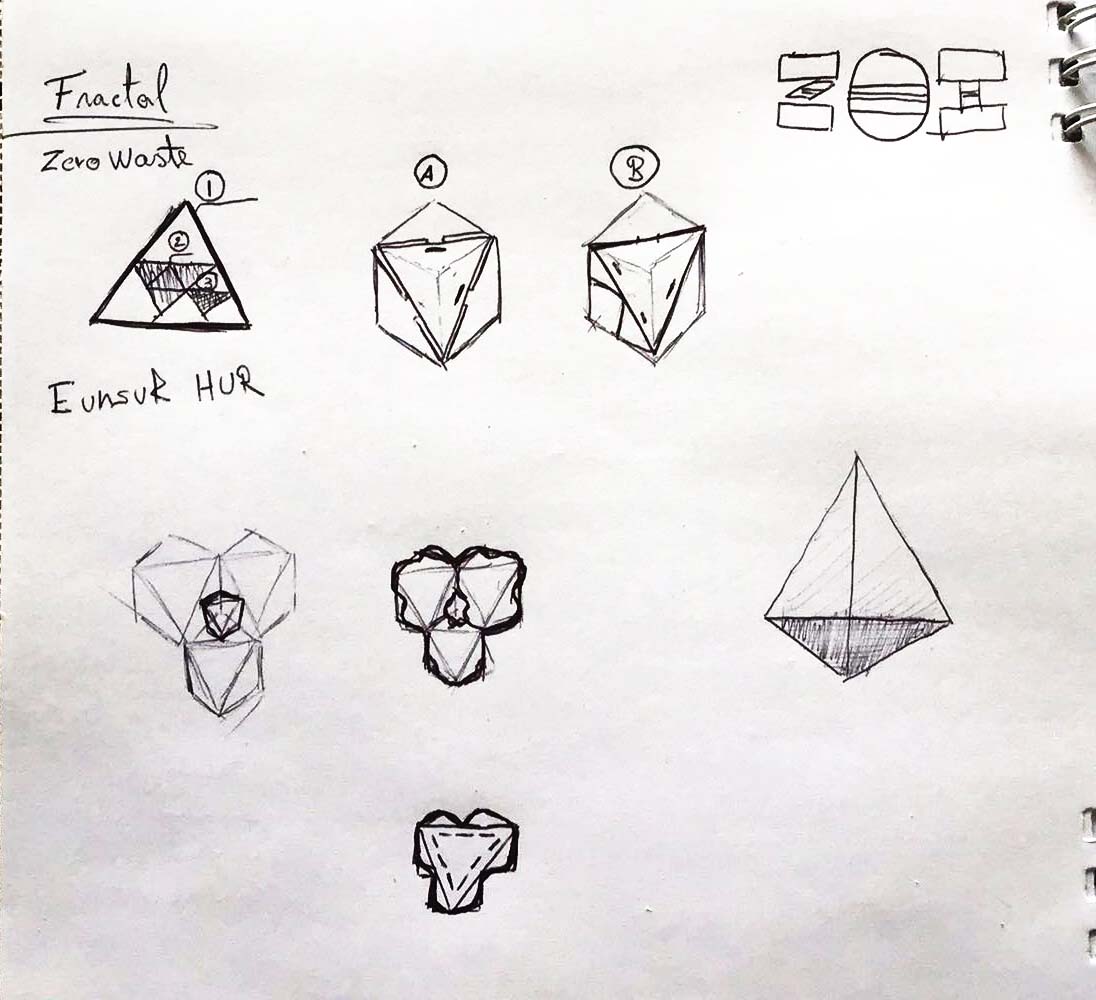
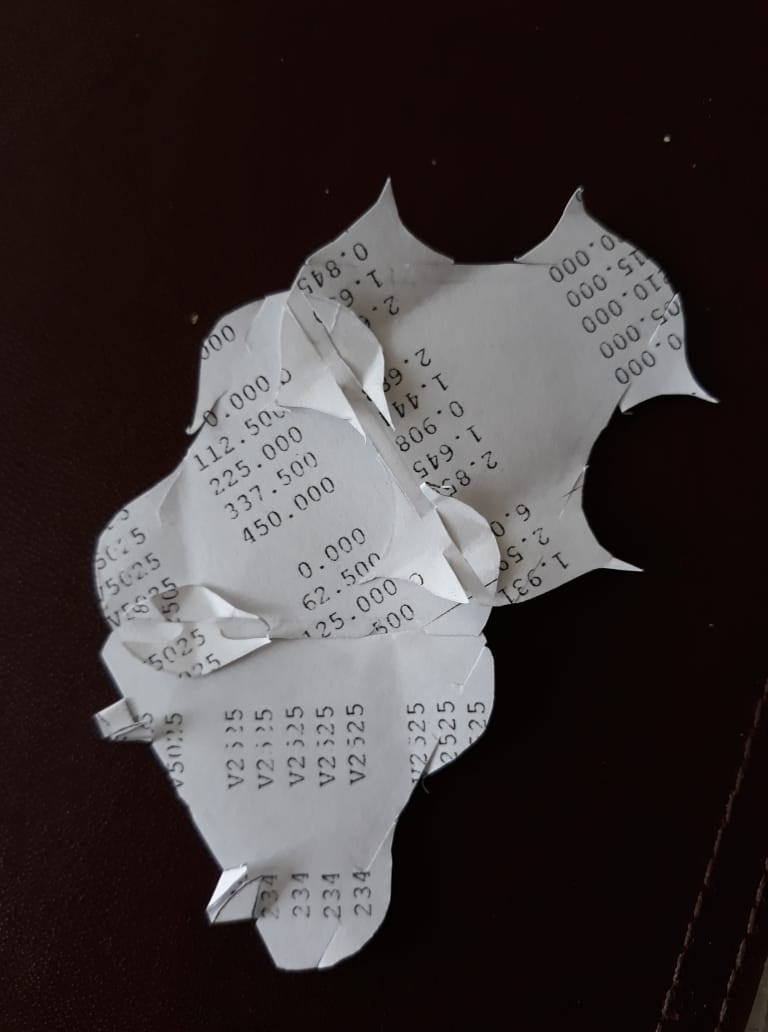

Here you can see all the process involved on designing my module, I took me 3h to achieve a nice result.
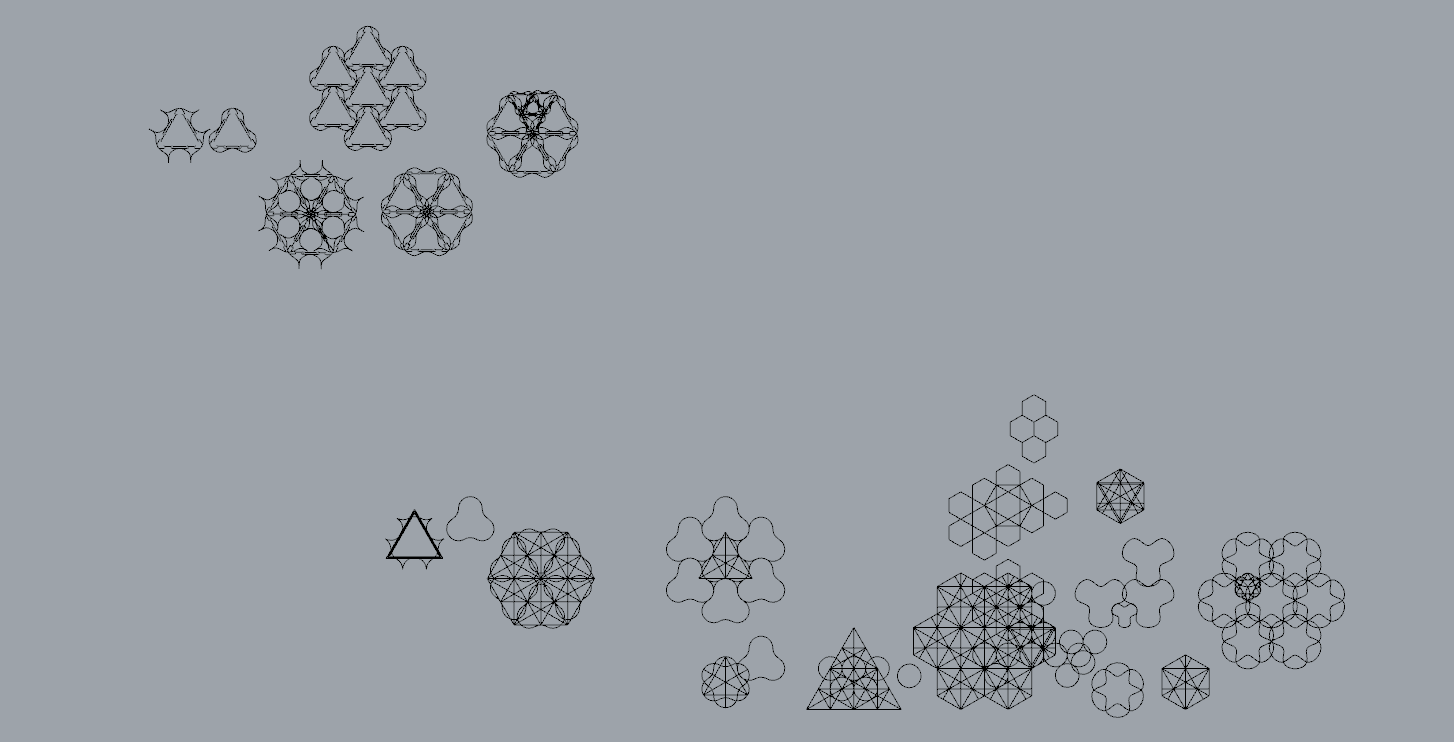

And finally...

Laser cutting¶
One we chaked Safety and Lab rules we started to taste with the laser and some materials. At the beginning I used a random fabric that I find in the lab (the context was really wild in my city because indigenes revolution and any shop was available). Then I use felt because I wanted to work with a material with some structure and bending possibilities.

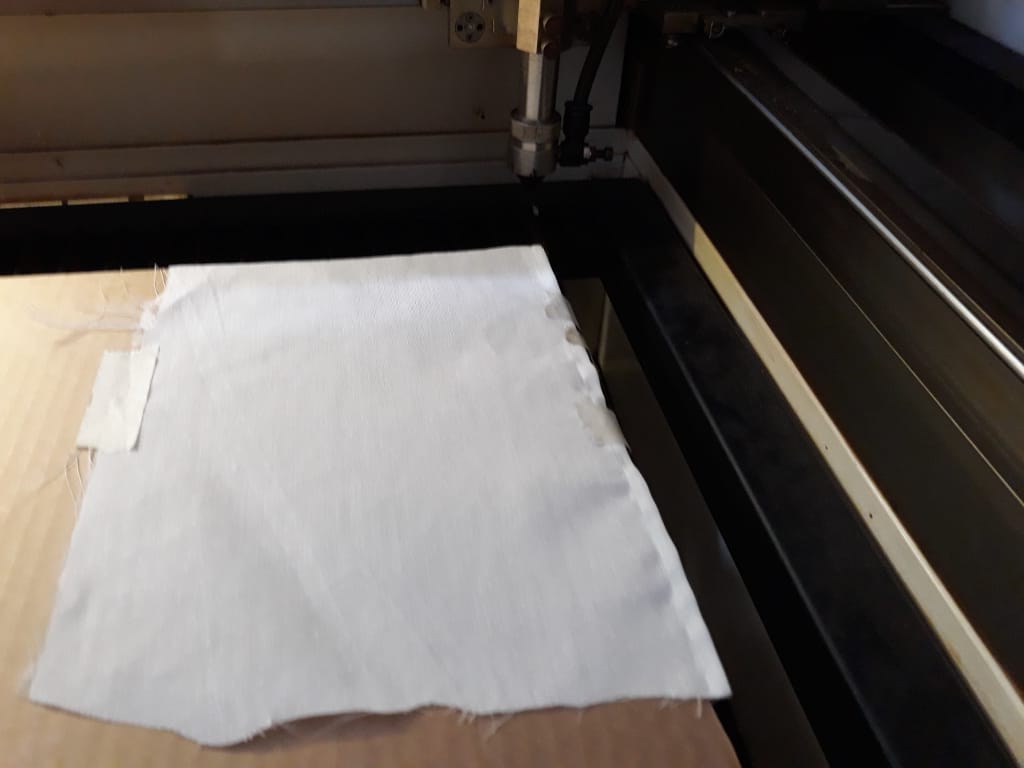

To the random fabric I found a good cut on:
Speed 100 and Power 20%
And with felt:
Speed 80 and Power 20%
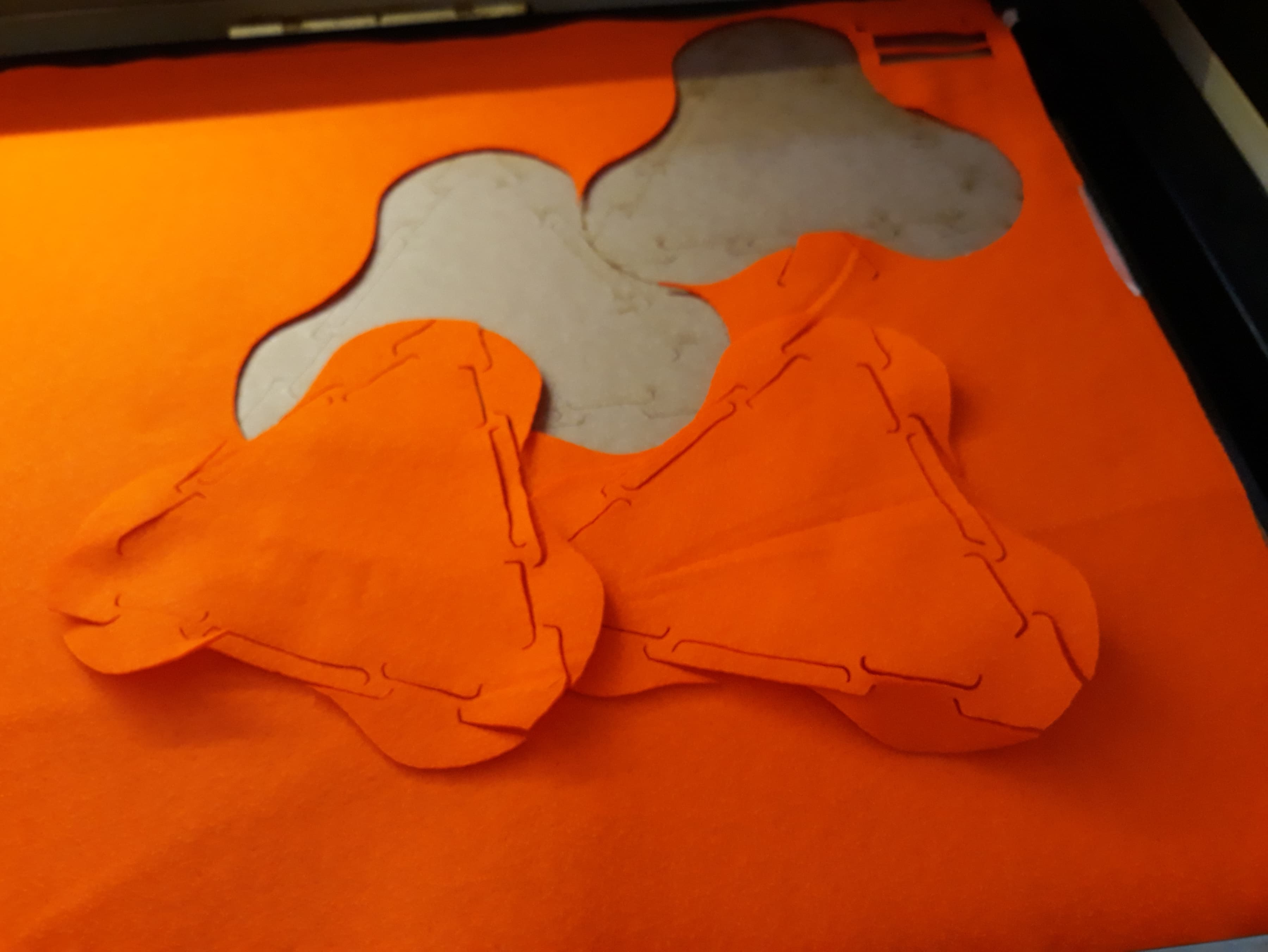
This photography is really important because I validate the fractal possibility of the module I have design and works perfectly!!
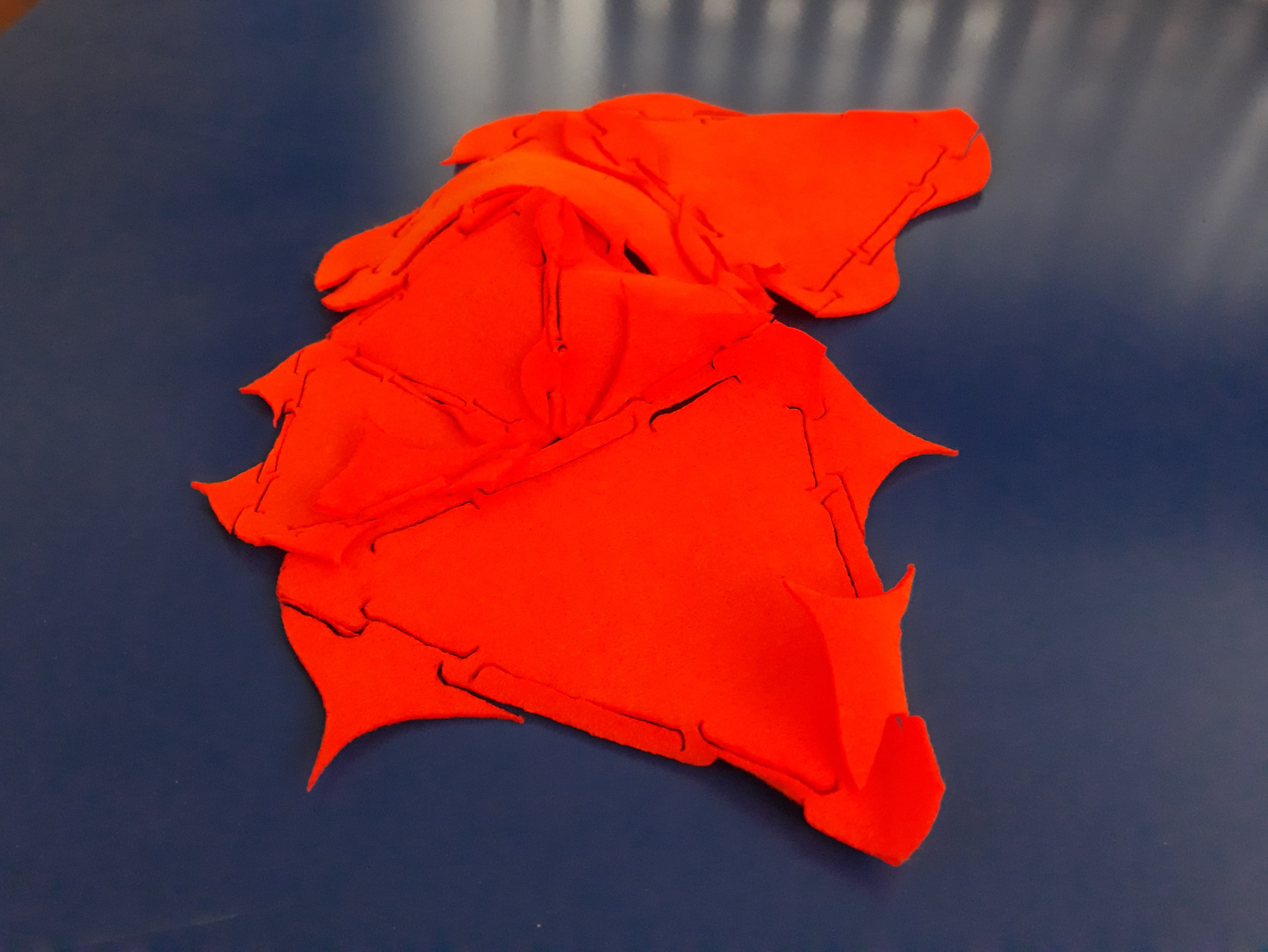
Then I started to find not just 2D combinations, also 3D. I have made 3 different sizes of my module. Here you can find a 3D combination for a big and a small modules.

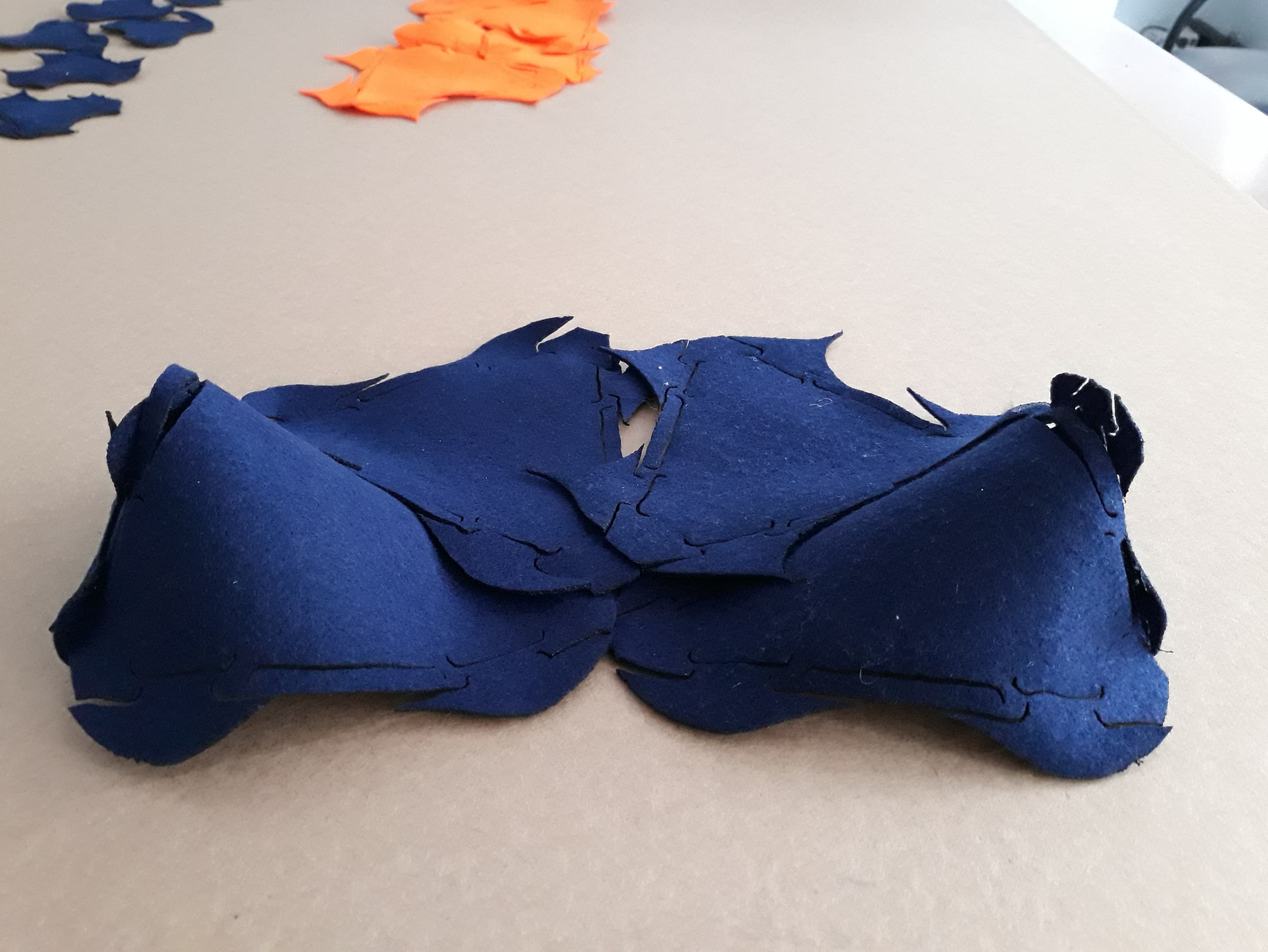
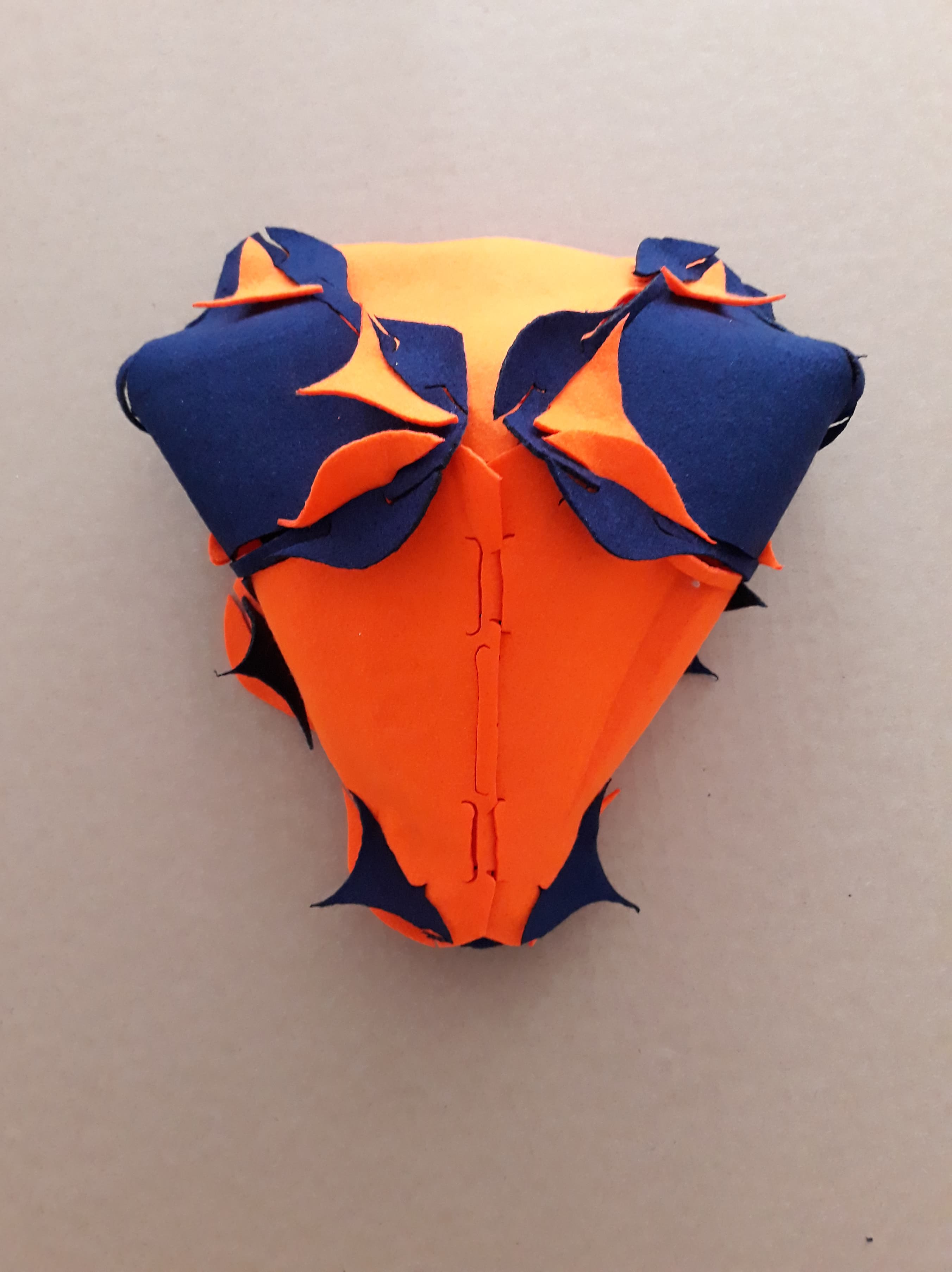
I let my designer instinct flow and I discover a super nice 3D shape. That can be used as a backpack or as a mask. I wish I had more time to explore other shapes. Probably on next assignments.

Upload open source¶
I have find Os-Circular-Fashion website nice to avoid researching all around Fabricademy website to find interesting patterns to get inspired. Also it is a good platform to share and is easy to upload files if you have a Gmail account.
You can see my work here.
Final Result¶

I can conclude telling that the module I have design works perfectly and probably the symmetry that I add to Euhnsuk Hur reference will bring a lot more possibilities to create more shapes because multidirectional tessellation growth instead of unidirectional teselation growth.